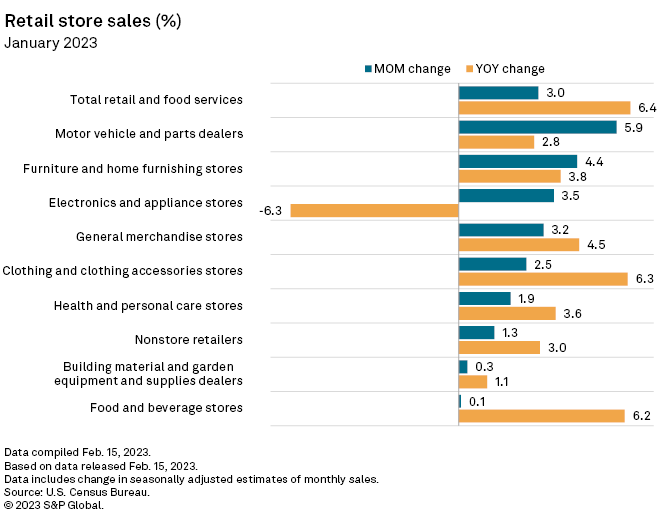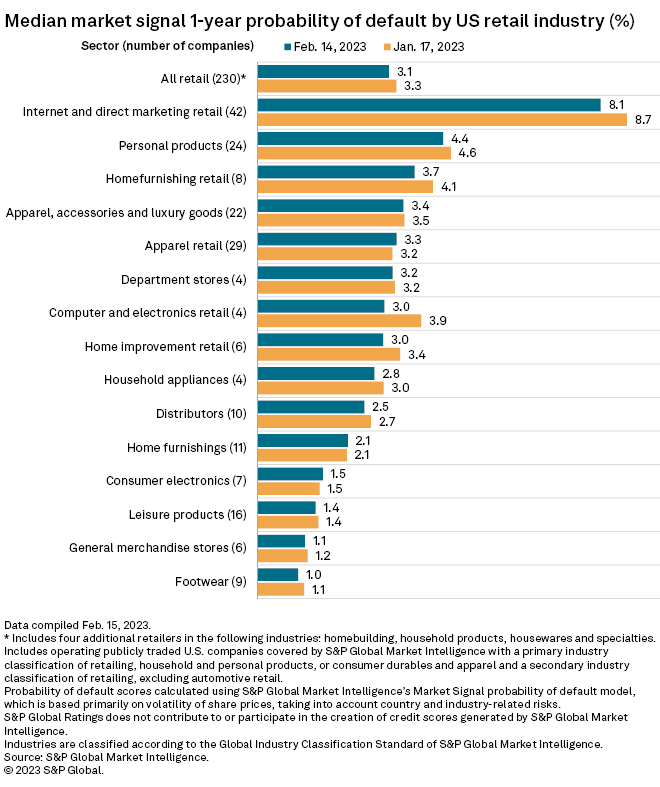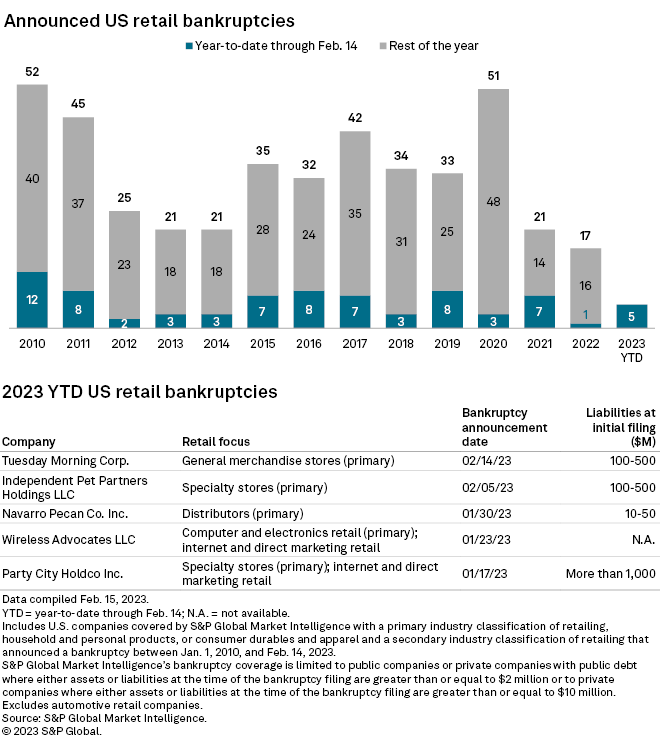S&P Global Offerings
Featured Topics
Featured Products
Events
S&P Global Offerings
Featured Topics
Featured Products
Events
S&P Global Offerings
Featured Topics
Featured Products
Events
Banking & Capital Markets
Economy & Finance
Energy Transition & Sustainability
Technology & Innovation
Podcasts & Newsletters
Banking & Capital Markets
Economy & Finance
Energy Transition & Sustainability
Technology & Innovation
Podcasts & Newsletters
S&P Global Offerings
Featured Topics
Featured Products
Events
15 Feb, 2023
By Michael O'Connor and Chris Hudgins
U.S. shoppers spent more than economists expected in January, reversing a two-month decline in sales.
Retail and food services sales rose 3% month over month, according to seasonally adjusted U.S. Census Bureau data released Feb. 15. Economists expected the figure to rise 1.7%, according to a consensus estimate compiled by Econoday.

The strong showing in January helps lower the odds the economy will slide into a recession this quarter, S&P Global Market Intelligence economists said in a Feb. 15 note. Still, it is unclear if January's surge is evidence of "resilience or a last hurrah."
"February's data will be closely watched to determine the direction of consumer spending and the economy this year," the economists wrote.
Retail sales
U.S. retail and food services sales came in at $697.0 billion in January, according to the seasonally adjusted preliminary estimate from the Census Bureau. The rise comes after November and December sales fell, fueling concerns about retail sales in 2023.
Good weather in January likely lured pent-up consumers to go shopping, and earlier holiday sales likely depressed December's sales and inflated January's increase, according to Market Intelligence economists.
Motor vehicle and parts dealers rose 5.9%, the biggest monthly increase in all retail categories, excluding bars and restaurants. A group that includes sporting goods, hobby, musical instrument stores and bookstores posted the highest annual increase among retail categories except for bars and restaurants, rising 6.9%.
Furniture and home furnishing stores posted the second-highest monthly increase at 4.4% or 3.8% on an annual basis.
Food and beverage stores posted the smallest monthly gain at 0.1%. Electronics and appliance stores posted the only annual decline among retail categories, falling 6.3% compared to a year ago.
The sales figures are not adjusted for inflation, which rose 0.5% on a monthly basis in January. Annual consumer price rises slowed during the month to 6.4% from a summertime peak of more than 9%.
Default risk
As of Feb. 14, the median probability of default score for all publicly traded U.S. retailers fell to 3.1% from 3.3% on Jan. 17.

Internet and direct marketing retailers had the highest median market signal one-year probability of default of any sector at 8.1%, down from 8.7% on Jan. 17, according to Market Intelligence data. The score, which represents the odds of default within a year, is based mainly on the volatility of stock prices for public companies and accounts for country- and industry-related risks.
Bankruptcies

There were five retail bankruptcy filings in 2023 as of Feb. 14, compared with one in the same period a year ago. More broadly, U.S. corporate bankruptcy filings rose in January to the highest monthly total in nearly 2 years following a historically slow 2022.
